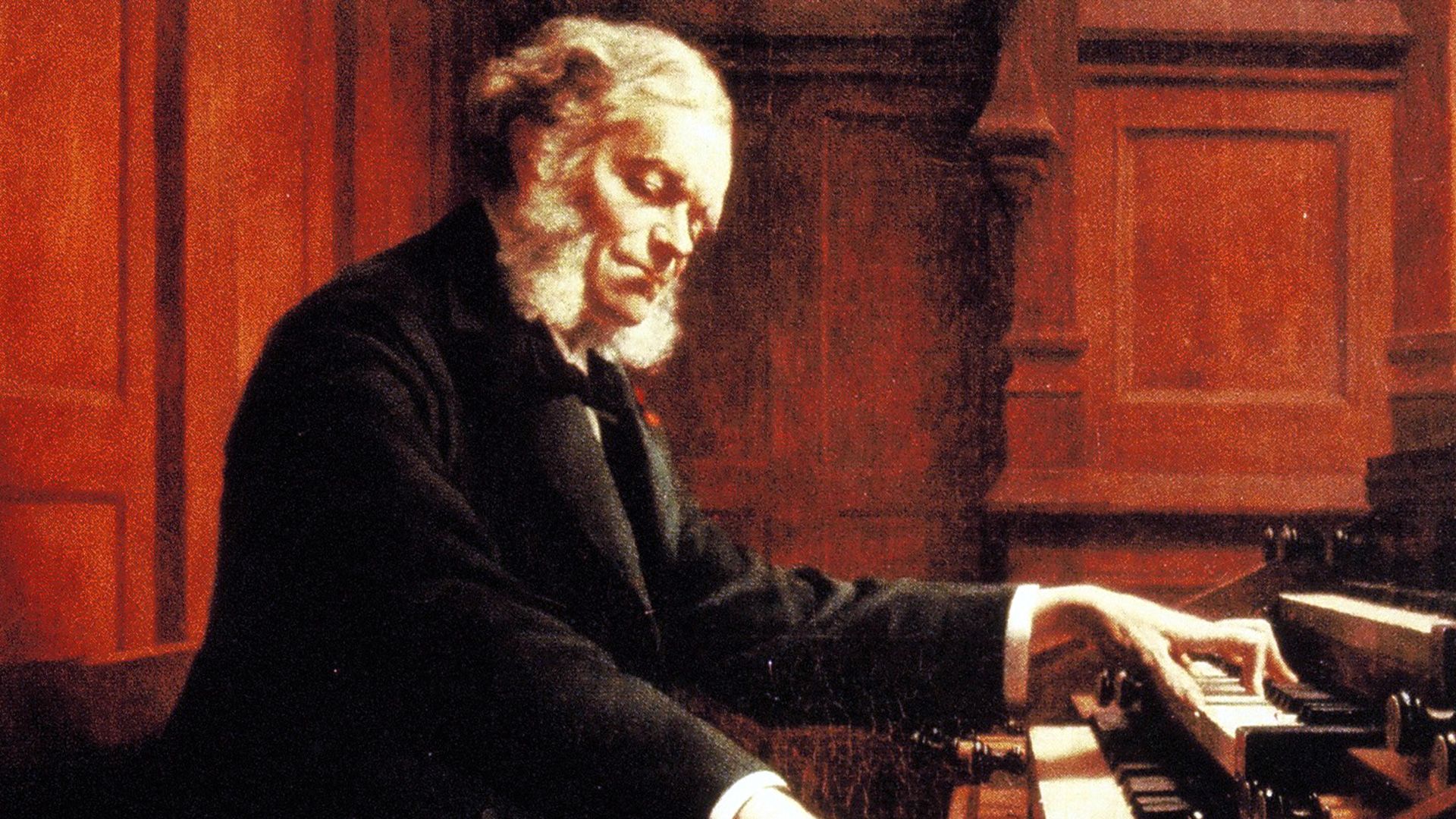
Historical
The foundation of the Aristide Cavaillé-Coll Association dates back to 1975. At that time, the transformation of this builder’s instruments – electrification, “barquization”… – was still commonplace, the registering as historical monuments was rare and the acceptance of its esthetics as fully valid in itself. was considered hypothetical at best. The decision was made to publish a review La Flûte Harmonique. The first two years were marked in particular by prestigious concerts in Saint-Sulpice and a protest action following the total reconstruction of the first significant Parisian organ (1838) of the initial Cavaillé-Coll father and son partnership, Notre-Dame de Lorette.
In 1978 a change of direction took place: Georges Lartigau took on the presidency, a position he then held for four decades. The new team sought to promote familiarity with instruments that were little known at the time (Saint-Bernard de la Chapelle, Bécon-les-Bruyères, Long-sur-Somme, etc.), to strengthen contac in the provinces (creation of delegations, etc.), while improving the presentation of the magazine, which was first revived with a special brochure on The Work of Cavaillé-Coll in Paris. The association also published nearly one hundred postcards of 19th-century organ cases. The defense of instruments that were threatened by dubious restoration projects (notably Saint-Denis, 1982-84, with an international petition — see reviethe accounts in La Flûte Harmonique) took its place in our activities alongside support and advice given over the years to owners wishing to see their instruments restored (Long-sur-Somme, Sacré-Coeur de Montmartre, St-Pierre in Douai etc.).
Events were also organized: in addition to concerts and attendance at various conferences, organ academies and festivals (Rouen, Angers, Texas, etc.), in 1999 the association, at the request of the Ministry of Culture for the centenary of the death of Cavaillé-Coll, planned and carried out an international symposium in Saint-Denis and Paris. Since that date, several study sessions have been organized around specific questions concerning the broad field of esthetics and organ music, including before and after the work of Cavaillé-Coll.
The association has always taken to heart the threefold goal of dissemination, intervention and historical, technical and above all esthetic study of the organs of the French 19th century. La Flûte Harmonique in the form of a review reached its 100th issue in 2018 with a very diversified content including in particular monographs on significant instruments (Saint-Omer, Saint-Dizier, Saint-Sulpice etc.) or the republication of period documents accessible only with difficulty. Since 2000 it has been devoted above all to the publication of the proceedings of the study sessions and to examining emblematic instruments by the Master (Elbeuf/St-Jean, Saint-Denis, Warrington, Ghent), with an A4 format replacing A5 and a significant increase in the volume of text in each issue. However, various difficulties related to the search for quality material and the immense work involved in producing the journal led the association to suspend publication of La Flûte Harmonique; the activity of the association focuses on other projects and, in the future, is likely to be disseminated more and more through our website. Certain specific themes may nevertheless still be approached via paper publications.
The Aristide Cavaillé-Coll Association, at a time when — partly thanks to its actions over the past forty years — the instruments of the great maker are acclaimed, even copied or imitated and are no longer automatically threatened, is working on a new impetus. To celebrate the bicentenary of the birth of Aristide Cavaillé-Coll 1811-2011, the association organized, with the support of OrganPromotion in Germany, an international composition competition for original instruments by this builder. More than fifty scores from all over the world were received, showing that the Cavaillé-Coll organ still looks to the future.
The association is intent on fully integrating the 21st century by opening up to a new audience, organ lovers and specialists for whom the founding message of the association has, fundamentally, been heard. A challenge for a new generation, but which the cultural wealth from the era of Cavaillé-Coll and his successors causes to be very promising…
